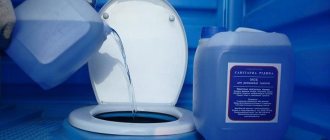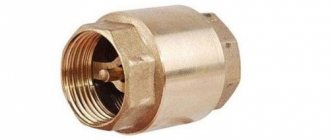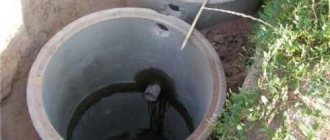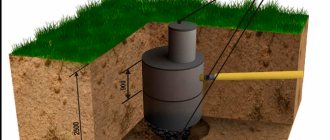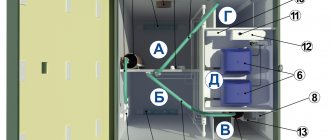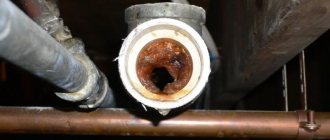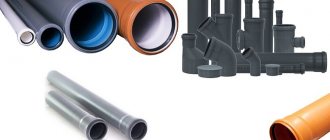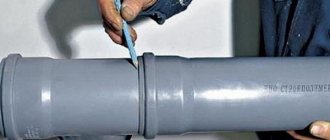The fermentation process is used in the preparation of kvass, wine, beer, and home brew for moonshine. It occurs with the participation of thermophilic yeast cultures, which decompose sugar into alcohol, water and carbon dioxide. In the case of drinks containing a small amount of alcohol (kvass, light cider), fermentation is necessary to obtain a characteristic taste and CO2, which carbonates the liquid. With alcoholic beverages, the alcohol and the resulting flavor composition are important. Most recipes for alcoholic beverages that require fermentation of raw materials contain a mention of a water seal.
This device does not allow air into the fermentation tank, releasing the resulting carbon dioxide out.
Water seal for fermentation
What is a water seal and why is it needed?
As you probably know, mash is used to make wine or moonshine. During the fermentation process, yeast converts sugar into ethyl alcohol and carbon dioxide. Gas accumulates, pressure increases in the container with mash and eventually it explodes.
To prevent this from happening, carbon dioxide must be removed. But you can’t just remove the lid from the fermentation tank. The fact is that in addition to yeast, bacteria live in the mash and feed on alcohol. While there is no oxygen, they sleep, and when it appears, these bacteria begin to eat alcohol and produce vinegar.
Therefore, to prevent us from getting vinegar instead of the long-awaited wine, a valve is placed on the fermentation tank, which releases carbon dioxide from the tank and does not let oxygen in. This valve is called a water seal (or water seal).
The simplest diagram of a water seal is shown in the figure below.
The operating principle is simple. When the pressure in the mash jar becomes high, excess gas leaves the tube through the water. And water prevents oxygen from entering the container.
Another important function of the water seal is to prevent foreign microorganisms from entering the fermentation tank from the surrounding air. The entry of such microorganisms into the mash leads to infection and, as a result, spoilage of the wine.
Normal development of yeast in mash
If the yeast in the mash feeds only on sugar, it will not feel very comfortable and will not work well. In addition to sweets and water, they need minerals. Without them, the fermentation process is also possible, however, a large amount of harmful impurities is released, so it is recommended to feed the sugar mash. Yeast mainly needs elements such as phosphorus and nitrogen. Therefore, ideally, for every kilogram of granulated sugar, you need to add 3-4 g of superphosphate and 1.5-2 g of ammonium sulfate. Instead, you can put complex mineral fertilizer (1 teaspoon), such as nitrophoska, in the mash.
But you can do without chemical additives by using some food products that contain the necessary elements. For example, you can add crushed berries or fruits or freshly prepared fruit juice to the mash. Bread (preferably black) or crackers also give a good effect. In addition, to feed the yeast, you can use well-boiled grain raw materials in the proportion of 0.5−1 kg/10−15 liters of mash.
Do not use tomato paste for these purposes, as some specific manuals recommend. This method was used in the 70s of the last century, when all kinds of thickeners, dyes, emulsifiers, stabilizers, but most importantly, preservatives that inhibit the growth of yeast were added to the paste. The same applies to many factory-made canned fruits.
Purchased water seals
The water seal can be purchased in specialized stores for moonshiners and winemakers or ordered online. Prices range from 100 to 300 rubles. Below I will provide photos of the two most common designs and comment on them a little:
- Double chamber
It is a curved tube with two chambers connected in series into which water is poured. A rubber band (usually sold separately) is installed at one end for sealing. You need to keep an eye on the rubber band; it dries out over time and stops sealing the container.
A good and inexpensive water seal can be bought here
- Collapsible
Consists of two flasks, one inserted into the other. The advantage over the two-chamber design is that this one is smaller in size.
I use store-bought shutters. Their disadvantage is that they noticeably increase the height of the container. I usually have bottles of mash in a special closet and with store-bought closures they don’t fit there.
How to install
Any siphon purchased in a retail chain has an instruction manual, which details the order of its assembly according to the drawn diagram, so a detailed description of the process of connecting various parts does not make sense. Installing a standard siphon (Fig. 13) in a bathtub consists of the following steps:
- On the floor, according to the instructions, connect the elements of the U-shaped sump, screw in the inspection cover and the pipe, which is attached to the bottom of the bath.
Important: The most important thing in this case, as in assembling the entire siphon, is the correct installation of the cone-shaped ring gaskets. The sharp end should fit into the joint of the parts being connected, and the wide end should be pressed with a union nut.
- Next, place a gasket in the drain hole of the bathtub, place the assembled unit underneath and screw it with a screw inserted into a metal cup with holes on the other side. However, do not apply too much force when rotating to avoid stripping the thread.
- Insert a pipe with a cup and a rubber gasket from the outside into the overflow hole at the top of the bathtub, screw it on the other side with a screw through a metal round grille.
- Next, connect the outlet pipes of the overflow bowl and the lower unit of the siphon with a double-sided corrugation; to do this, place cone-shaped rings on its ends and screw the corrugation with union nuts, pressing the wide edge of the gaskets.
- Insert a corrugation with a cone-shaped ring into the outlet hole of the siphon unit and press it with a union nut. The second end of the corrugation is inserted into the sewer pipe.
Closures in the sewer system are the main way to get rid of unpleasant odors from pipes. For their installation, various types of siphons are sold in the retail chain. Each product is intended for use in a specific type of plumbing fixture, so the consumer only has to purchase the item for its intended purpose, assemble and install it according to the attached instructions.
Homemade valve designs
There are plenty of designs for homemade water seals, because... winemakers are very inventive people. Here I will give the most popular and simple designs.
- Medical glove
A medical rubber glove is simply put on the container, in which a hole is made with a needle (usually in one of the fingers). The glove is tied to the neck with rope or tape to prevent it from being torn off by pressure. The glove determines whether fermentation is still going on. When the process is in full swing, she is inflated like a balloon. When fermentation stops, the glove falls off.
I rarely use a glove. It seals containers with wide necks well, such as 3-liter jars, but is not suitable for drinking water canisters with a narrow neck. It is very difficult to achieve the required compaction.
Here is another interesting variation of this design
- Straw in a jar of water
Everything here is as in the diagram at the beginning of the article. A hole is made in the lid of the fermentation tank, into which one end of the tube is inserted, and the other end is inserted into a jar of water.
The tube in the lid is sealed with plasticine. On one thematic site I read advice that you need to seal it with dough. I tried it. The dough dries out and stops compacting properly. Apparently that author has never tried this himself.
The tube itself can be purchased at a hardware or hardware store. I also came across them in pet stores and stores that sell water filters.
The disadvantage is obvious - you need to put an additional can or bottle of water.
- With odor removal
The fermentation process is accompanied by a strong specific odor. Especially when there are large volumes of mash. Not everyone will like this smell. Below is a diagram (unfortunately there is no photo) of a water seal, which allows carbon dioxide to be discharged to the street or to the ventilation. Although your neighbors may not like the ventilation outlet.
The meaning is simple. This is still the same shutter with a tube into a jar, but only the jar is tightly closed with a lid and a second tube is taken out of it, leading to the street.
- From disposable syringes
Made from two disposable syringes. The body of a disposable syringe is hermetically installed in the lid of the fermentation container with the spout facing up. A second syringe is attached to it with electrical tape, with the nose down. The spouts are connected with a hose and water is poured into the syringe.
In the next section there is a video dedicated to this design.
But this version of a water seal, made from a test jar and two syringes, was sent to me by reader Alexander Sergeev. He spotted this design on the Internet.
Why does mash ferment poorly?
There are several factors that interfere with normal fermentation. These may be the following reasons:
- little yeast is added;
- the room is cool;
- lack of nutrients - need additional feeding;
- poor quality yeast.
Using the advice and recommendations of experienced moonshiners on making or purchasing ready-made fermentation tanks with a water seal and knowing how to make high-quality mash, you can provide yourself and your loved ones with strong homemade moonshine that you won’t be ashamed to put on the table on a holiday.
What do I use
I mostly use the simplest homemade closure - a tube piped into a water bottle. It is easily sealed with a lid using plasticine and very clearly conveys the fermentation process through the bubbles in the jar.
I read that during active fermentation the tube can become clogged with foam and it will stop passing gas. Therefore, it is recommended to use large diameter tubes. For example, I have tubes with a diameter of only 4 mm on 5 liter water cans, but such problems have never happened.
I also use store bought ones. There are a couple of Italian two-chamber water seals. I ordered from this store. In principle, there are no complaints.
The only negative, as I already wrote, they increase the height of the fermentation tank by about 15 cm. And these centimeters do not always fit into my cabinet where the mash is. If you are not limited by dimensions, then a commercial water seal is a good option for you.
This is where I end. What kind of water seal do you use? Write about it in the comments. And don't forget to subscribe to new articles. Have a nice day.
Best regards, Pavel Dorofeev.
What yeast to use for cooking
This issue should be taken very seriously. Experienced moonshiners recommend using the following types of yeast:
- Dry yeast. Among the proven, well-proven ones, SAF-LEVUR can be distinguished.
- To prepare mash, compressed baker's yeast is often used, which has also shown excellent results.
- Special yeast for alcohol. If you can get your hands on them, that would be ideal.
- Fast dry yeast (for example, saf-moment) should be used with great caution, since it often does not ferment and produces a low percentage of alcohol in the mash.
Why do you need a water lock when fermenting wine?
The main task performed by the hydraulic lock is to prevent free access of oxygen (air) directly into the container (bottle with a wide neck) for fermenting fruit and berry wort. Oxygen is an active oxidizing agent; if it is freely available in the fermentation tank, an inexperienced winemaker may end up with vinegar rather than wine. Microorganisms are able, with the help of oxygen, to actively convert produced wine alcohol into acetic acid. The fermentation process takes a long period of time, during which active release of carbon dioxide occurs. If the container is tightly sealed, the wort will actively ferment, then a large amount of wine gases may accumulate, leading to the creation of excess pressure inside and, as a result, water hammer, destruction of the vessel, which will simply burst.
In order to avoid such a situation, a hydraulic seal is used. The operating principle of such a device is as follows. A gas outlet tube is hermetically installed in the bottle cap at one end, and the other end is placed in water (jar). In this case, gases under excess pressure freely enter the gas outlet tube and exit in bubbles into the water. Water prevents oxygen from entering the fermentation vessel.
The wort fermentation process is divided into two main stages:
- Violent fermentation. Lasts from 1 to 2 weeks with characteristic foaming and active release of large amounts of carbon dioxide. The rate of gas bubble release reaches 150 per minute.
- Quiet fermentation. It can last up to three months depending on the original wine material and fermentation conditions.
Read: Making wine yeast at home
A do-it-yourself or purchased water seal for fermentation (fermentation tongue, as professionals call it) serves as a release valve for carbon dioxide.
Fighting odor
During the active fermentation phase, the smell spreads throughout the house. How to get rid of odors? To do this, lower the temperature or move the container to a cooler room. When vigorous fermentation ends, the vessel should be returned to its original place. The room temperature should be optimal.
Some distillers say that the shutter is also made to combat unpleasant odors. It is recommended to fill the tube with water. They recommend special nozzles that absorb odor, but this does not always help.
The smell from the apartment can be removed as follows. A water seal is installed directly into the sewer system, where gases are removed during fermentation. They cannot overcome the liquid column and remain in the sewer.
The water seal is an indicator of the intensity of the process in the mash. If no bubbles appear on the surface of the liquid, anaerobic digestion is complete. The mash acquires a specific smell and taste. The end of the process can be determined using a wine meter.
A water seal is needed to obtain a quality product. This design is necessary when the fermentation process is slow.
Source
Cotton wool plug
To remove CO2 from the container, its neck is plugged with a kind of cotton plug.
You can use not only cotton wool, but also other porous material. However, in this case there is no need to talk about complete tightness. At the end of the fermentation process, a sharp drop in pressure occurs. Because of this, air begins to penetrate into the container. In addition, it is almost impossible to determine the end of fermentation. Such a water seal is installed if another one cannot be made for some reason. All equipment that you will use for winemaking must be sterilized. This is not difficult to do; you just need to lower the object into boiling water for a couple of seconds. Winemakers are still debating whether this should be done with water seals. Many are inclined to believe that the glove, the cap, and the gas outlet tube must undergo a sterilization process.
DIY making
The question often arises of how to make a water seal for making mash with your own hands. Making a water seal yourself is not at all difficult. When choosing a reliable method for creating a homemade mash device, you first need to assess the tightness of the system. This factor directly determines the future taste characteristics of an alcoholic drink.
Water
To make a water seal for mash, you will need:
- cork (made of wood or rubber) or lid for cans made of nylon;
- thin silicone rubber tube of the required length;
- sealant to seal the joint between the pipe and the plug (previously ordinary plasticine was used, currently sealant is used for plumbing work);
- liter jar;
- scotch.
A hole is made in the plug that corresponds to the tube. Then it is inserted into it so that it goes in 2 cm.
The joint is properly lubricated with plasticine or sealant so that outside air does not penetrate into the container with mash or wine.
A tube is placed over the container with the alcoholic drink, the second end is lowered inside the jar of water and the tube is secured to the jar with tape so that it does not suddenly fall out.
Medical glove
This invention has been used for a long time. It has still not lost its popularity due to the availability of “materials”, clarity and the ability to put a glove on any neck, ensuring tightness. To make a glove on a mash, you need:
- put a glove on the container into which the mash is poured and tape it tightly to the neck with tape;
- to remove carbon dioxide, make a hole in the fingers with a needle;
- The fermentation stage is determined by how full the glove is: when it falls, the mash is ready for the next stage.
Cotton plug
In some cases, some users use cotton wool as a seal. This method is the easiest of the existing ones; it will be enough to tighten the neck of the fermentation container with a piece of cotton wool. However, this will not make the method more effective, since air still penetrates inside the container.
Another disadvantage of this method is the impossibility of establishing the completion of the fermentation process. In such a situation, you need to bring a match to the neck of the container. When it burns, fermentation is complete. When the lit match goes out, the yeast is still working.


